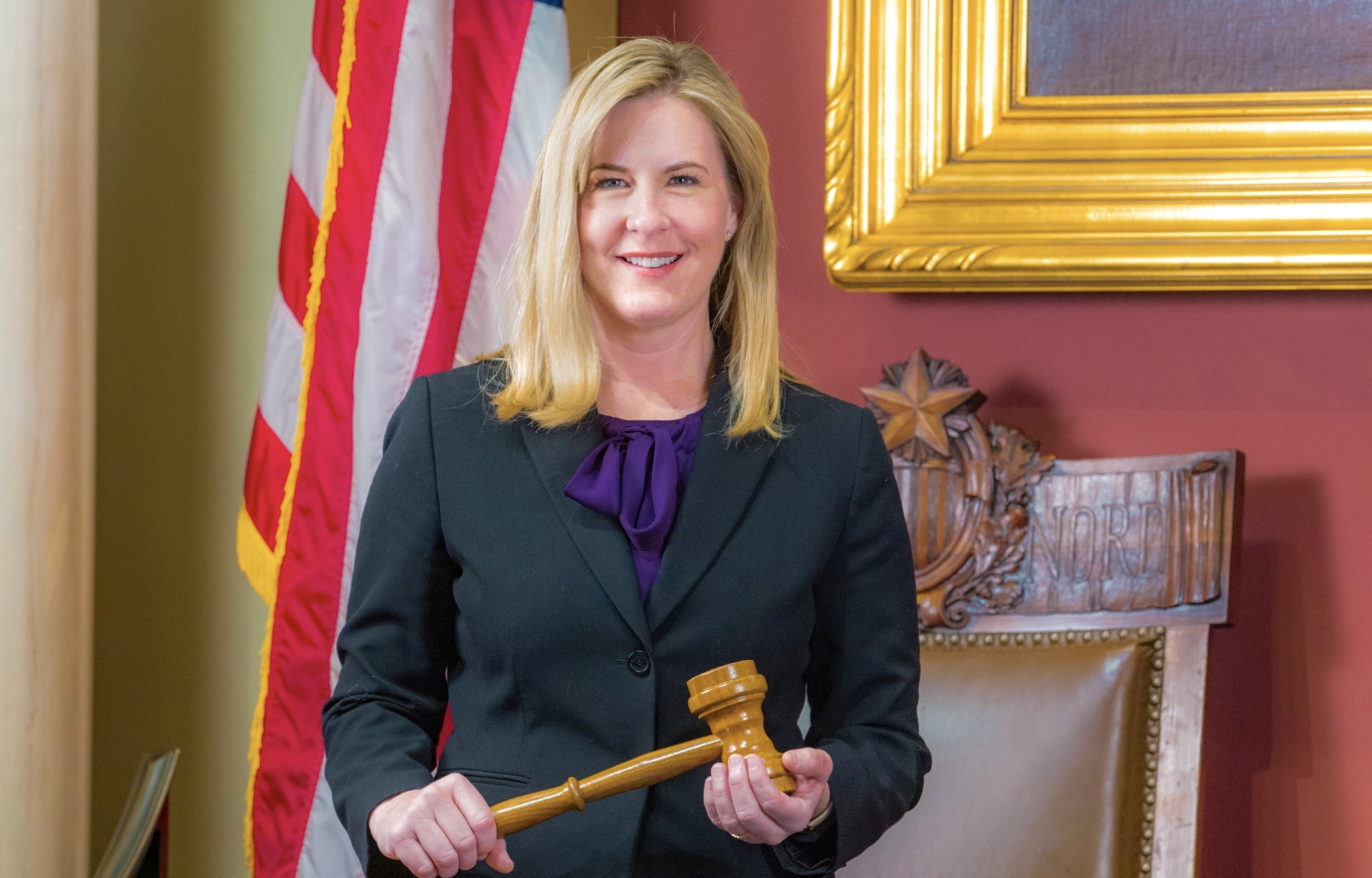You could say Top Gun: Maverick is a better movie than Top Gun—a lot of people sure have already, with startlingly excessive enthusiasm. But really,Top Gun: Maverick is just an actual movie, where the original was a fleet of fighter jets in search of a plot.
Or, anyway, in search of a conflict, at least until those stray MIGs conveniently materialize near the end. Slavering for a war movie that wasn’t just another Vietnam bummer, Hollywood got as desperate in the ’80s as Reagan invading Grenada and decided to make one without a war. Just in time, too: Before Top Gun hit VHS, Gorbachev was already thawing the U.S.S.R. Not that this dimmed any of the lust for the flick’s airborne machinery, of course. And once you’ve got the gear, you can always find a new enemy.
(Seriously, no matter how bad you remember Top Gun being, I assure you it is worse, and if you remember it as good—no you don’t, you just remember being 16. Even its camp value is exaggerated, just another example of Tarantino tricking trash hounds into believing that every shitty movie is secretly fascinating.)
If Top Gun sold the machines, Top Gun: Maverick sells the man. The sequel hardly elicits any yooo-essss-ayyy pride, because its ideological needs lay elsewhere. Like most Tom Cruise movies, it’s primarily about Tom Cruise, ageless all-American boy as psychotic overachiever, flaunting his unnatural persistence beyond the call of stardom. The American creed of individual excellence that Cruise embodies takes precedence over the (fading) global hegemony the Navy represents. (Without ever directly contradicting it, of course—we’re the greatest country in the world blah blah blah because our leaders know when to step aside let Great Men rise to the challenge blah blah blah.)
Anyway, our old pal Pete “Maverick” Mitchell has been ducking out of promotions since the Reagan administration so he can keep flying. In the opening sequence of Top Gun: Maverick, he defies a crusty old admiral (Ed Harris, who somehow wasn’t in the original Top Gun) and revs a test flight up to Mach 10—Mach 10.1, actually, just to prove a point. “He’s the fastest man alive,” a Maverick groupie on the flight deck proclaims in awe. “You got some balls, stick jockey,” the admiral growls Ed Harrisly at Maverick. Three-quarters of everything spoken for the next two hours will resemble one of those two statements.
Rather than getting busted, our boy is shipped back to, yes, that elite school for the top one percent of Navy pilots, Top Gun. Here Jon Hamm, looking more than ever like a fuckably hungover Fred Flintstone, lays out the challenge ahead, a mission that feels explicitly designed to allow for the film’s international distribution. Seems an unspecified “rogue state” is developing a “uranium enrichment site” that needs to be taken out before it goes into commission—that vague enough for you, China? Here’s the twist, though: Maverick has to select and train a young crew for the mission. He’s not flying it himself. (Sad trombone.) (Or the Harold Faltermeyer synth equivalent thereof.)
Yeah, so, sorry if you came for the planes, but you’re gonna have to deal with some regular movie stuff too, as an aging hotshot learns how to “let go” and nurture young people or something. Helping our hero along his journey is Jennifer Connelly, playing obligatory love interest Not-Kelly-McGillis. (Your man’s pulling down superhero money, Jen—you can afford to be a little more choosy!) She’s not just an old flame that Maverick rekindles, we’re reassured. She owns a bar and a sailboat and even squeaks past the Bechdel test by arguing with her teen daughter about homework in one scene. But the more traits are piled on her character, the more it feels like camouflage, like a backstory designed for someone in witness protection. We all know she’s really here to say things like “The navy needs Maverick. The kid needs Maverick.”
“The kid” is Miles Teller, aka Rooster, the son of Mav’s fallen compatriot, Goose. He struts credibly into the film in full Anthony Edwards cosplay—porn stache, beige aviators, Hawaiian shirt. He even commandeers a piano at the bar for “Great Balls of Fire,” as though a pumpin’ left hand is a genetic trait. He’s up for the big mission, but he and Mav don’t see eye to eye, for reasons obvious (dead dad) and less so (the elder pilot is overprotective). Rooster’s (will it be fatal?) flaw as a flyer is that he overthinks and hesitates. When the time comes to complete their suspiciously blow-up-the-Death-Star-like mission, Maverick repeatedly cautions him to stop thinking and use the For—I mean, trust his instincts—and both men communicate with Goose’s spirit so much while flying I half-expected a shimmering blue Edwards to appear in the final scene, nodding posthumous approval.
As for Cruise, well, for all his need to surpass himself, he became exactly as good an actor as he needed to be decades ago and stopped right there. (He seems to know it. “I don’t like that look,” a pal tells Maverick early on. “It’s the only one I got,” Cruise grins.) But his charisma remains, rooted as ever in the tension between his surface normality and whatever’s percolating within. Whenever Cruise is silent and still, you sense that every last ounce of his energy is expended to retain that composure. You know how your science teacher would point to a solid desk and tell you there were atoms you couldn’t see buzzing around frantically inside? Tom Cruise is that desk. If he ripped his face away to reveal that he was a lizard man all along, who would honestly be surprised?
But the planes! The planes! The stomach-lurching dip-dee-doos, the missiles you evade by shifting in your seat, the close calls, the swoops and swerves and turns—director Joseph Kosinski and his Cruise-approved crew render all the acrobatics and destruction more vividly than Tony Scott ever did. Even the cockpit scenes feel less dull and claustrophobic. The training sequences are lively and grueling, and there’s a finale worth calling that, with a bonus dogfight on top of what’s expected. If there’s at least one wingman ex machina rescue too many, maybe it’s just that no one wants the action to end. The pilots would have to go back to pretending to be people again, and nobody wants that. (The film’s emotional peak, incidentally, has nothing to do with its plot, and everything to do with seeing a visibly, naturally aged Val Kilmer, still recovering from throat cancer, onscreen.)
If Americans are bullies who fantasize about being underdogs, Tom Cruise gives that delusion literal form by increasing the insurmountability of each challenge he must overcome—physically, as an actual human—in each new movie. Here, that means not just requiring the actors to fly, but using practical effects instead of CGI. TG:M leans hard into Chuck Yeager’s flight credo that “it’s the man, not the machine” and just as hard into the central myth of Tom Cruise as John Henry as action hero as eternal frat boy, forever outperforming the computerized steam drill with clean-cut efficiency.
You will not, I hope, be surprised to learn that Maverick does get to fly the mission. One day he sets out to demonstrate to his trainees that the feat is indeed (sorry) possible, but in doing so, he also proves that no one else but Maverick could pull it off. That’s the meta-message of each new Cruise vehicle after all. This is what all movies could be like, this is what life could be like, if we only tried harder. Except we can’t. Because we’re not Tom Cruise.






